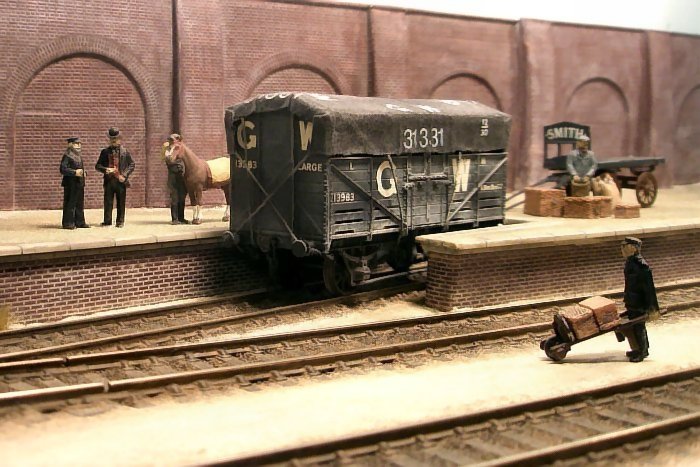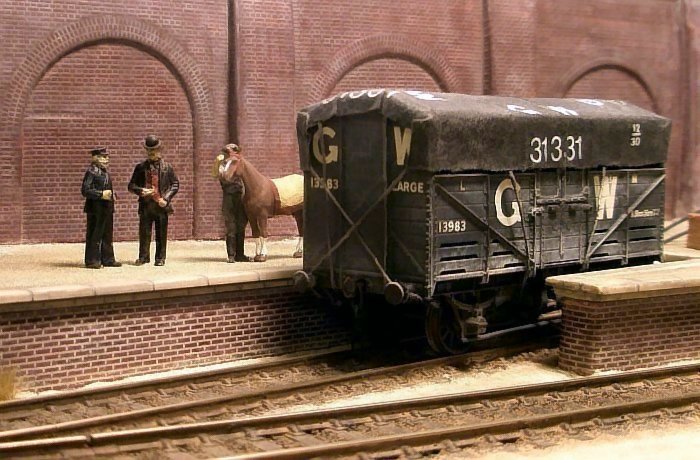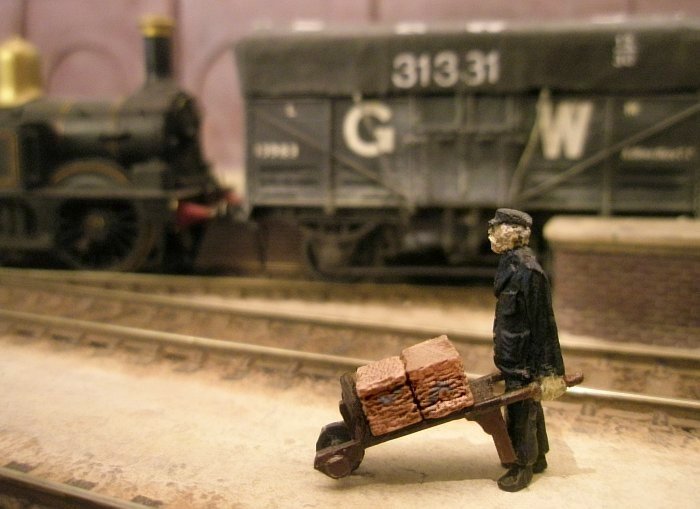All in a day's work, Part 2 (1914)

"Surely you do not intend to transport my prize-winning champion in that ?!". Mr Bull looked incredulously at Woodcourt, the Station Master of Farthing.

Woodcourt was acutely aware that the situation required all his diplomatic skills. "I'm afraid this is our only option" he replied "and we do convey horses in cattle vans quite frequently. The sheeting will keep her from panicking." He decided not to mention that the only horses ever carried in cattle vans were lowly farm animals.

Faced with no alternative, Mr Bull finally gave in. "But make sure to tighten the tarpaulin better. Those ropes look slack and I won't have my champion go down with pneumonia!". Heaving a sigh of relief, Woodcourt made a mental note to remind the staff of the sheeting regulations. Those ropes did look rather slack!

As No. 535 moved the van and its valuable cargo out of the loading dock, porter C. Walker realized that he now possessed some very useful inside information. After that ride, chances were that Mr Bull's champion wouldn't live up to its usual reputation at the races today. Best get some bets in.

Meanwhile, Woodcourt was happy to see the horse move off. He congratulated himself on solving the little crisis, and wondered if perhaps the day would turn out well after all. Little did he know that his troubles had only just begun...
-
 24
24



15 Comments
Recommended Comments
Create an account or sign in to comment
You need to be a member in order to leave a comment
Create an account
Sign up for a new account in our community. It's easy!
Register a new accountSign in
Already have an account? Sign in here.
Sign In Now